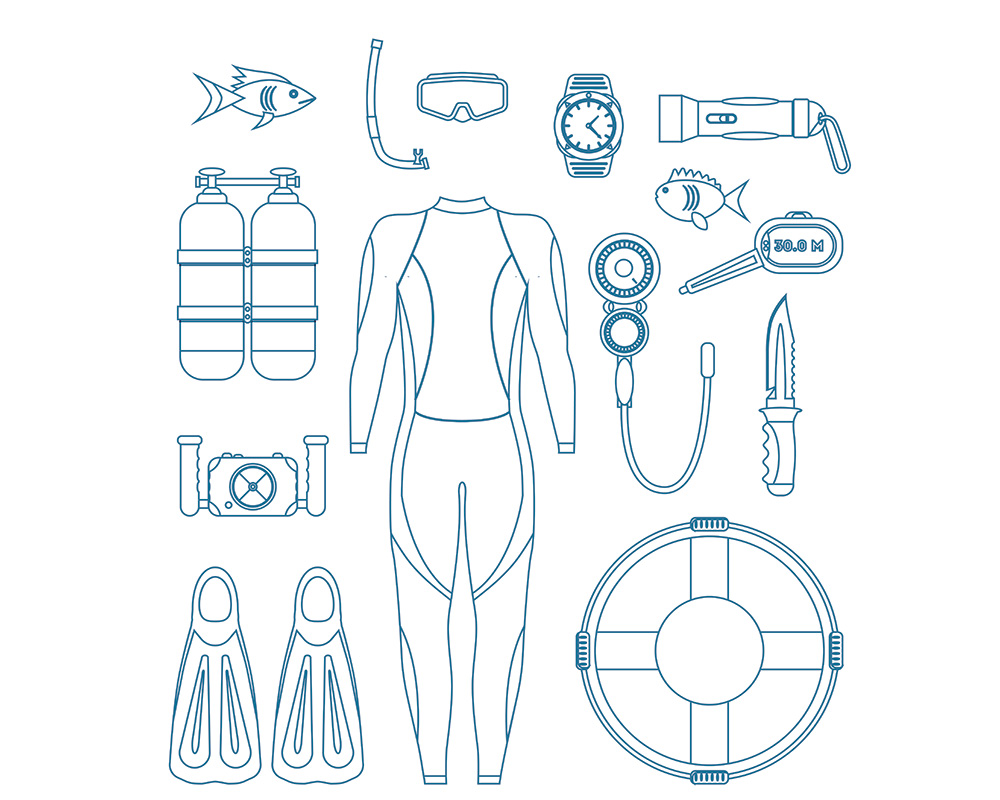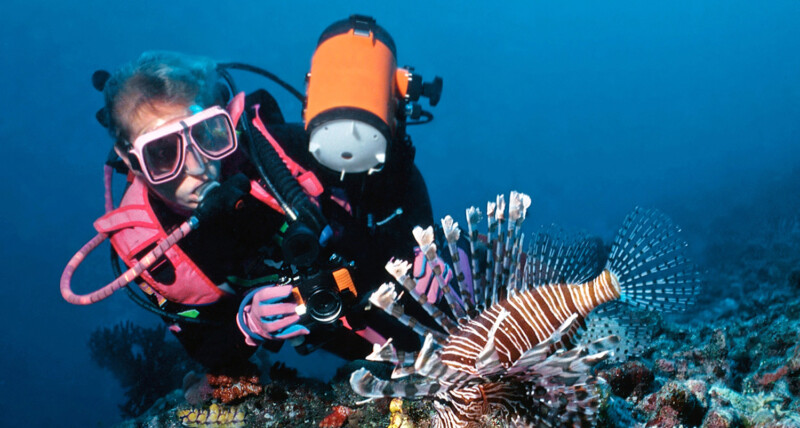Introduction: Beyond “Good Enough”
Walk into any dive shop and you’ll see rows of glossy regulators, buoyancy compensators, and wrist computers clamoring for attention. Yet seasoned, well-heeled divers seldom assemble a kit the way tourists grab souvenirs. They approach gear the way a sommelier shapes a cellar: thoughtfully, patiently, and with a bias toward lasting value.
This guide explores why “bespoke” matters in scuba, which components genuinely reward a premium investment, and how to build a collection that will deliver confidence—and pleasure—long after the novelty fades. You’ll also discover the very real trade-offs of servicing schedules and downtime, so you can plan gear ownership as carefully as you plan your dive calendar.
1. Why the Bespoke Mindset Matters
1.1 Trust When It Counts
Scuba equipment is life support. Each piece must operate flawlessly in an environment where redundancy—not fashion—saves the day. Boutique-level kit often means tighter tolerances, better materials, and quality-control standards that mass-market lines can’t justify.
1.2 Ownership Pride
A beautifully machined titanium regulator or a custom-cut wetsuit offers the same intangible satisfaction as slipping on a tailor-made blazer: you’re not just wearing gear, you’re inhabiting a story of craftsmanship and innovation. Pride of ownership naturally encourages better maintenance, which further extends usable life.
1.3 Sustainability
Long-lived products reduce churn. By choosing components designed to serve for 15–25 years, you cut down on waste and shrink the environmental footprint that comes from repeated manufacturing and shipping cycles.
2. Parallels With Other Collectible Passions
| Sphere | What Makes It Valuable | Underwater Equivalent |
|---|---|---|
| Fine Wine | Time-honored grapes nurtured under exacting conditions | Premium alloys, balanced first stages, and surgical-grade silicone engineered to age gracefully |
| Mechanical Watches | Fully serviceable movements meant for multiple lifetimes | Dive computers with replaceable batteries, firmware updates, and titanium casings |
| Cigar Humidors | Controlled humidity prevents deterioration | Proper post-dive rinsing, annual servicing, and climate-controlled storage |
The unifying principle is intentional curation. Instead of owning twenty mediocre items, you invest in a handful of exceptional pieces—and maintain them with diligence.
3. Core Components Worth a Premium Upgrade
(All prices are typical U.S. retail as of mid-2025 and may vary by region.)
3.1 Regulator System — $1,000 – $2,100
Why Pay More?
No one really buys a regulator built entirely by hand, but flagship models do feature lighter, high-performance materials—especially titanium—that shave off up to 40 % of the weight compared with brass. Titanium also resists corrosion, a boon for divers who split time between salt and fresh water.
Key Bespoke Touches
Custom Hose Lengths & Routing tailored to your trim position and body size.
Environmental Sealing to keep salt, silt, and ice crystals out of the first stage.
Interchangeable Second-Stage Housings: metal for cold water (improves heat transfer, reducing freeze risk), lightweight polymer for warm-water travel.
Service Interval & Downtime
Most manufacturers recommend annual servicing or every 100 dives—whichever comes first. That means shipping or dropping off your regulator off-season so you’re never caught without it for a planned trip.
Expected Lifespan
With routine service and the occasional parts kit, a high-end regulator can exceed 20 years of dependable performance.
3.2 Buoyancy Compensator Device (BCD) / Backplate-and-Wing — $800 – $1,600
Why Pay More?
Entry-level BCDs often rely on plastic D-rings, single-layer nylon, and stitched-in bladders that are nearly impossible to repair. Premium models substitute stainless-steel or titanium hardware, 1000-denier Cordura shells, and modular wings you can replace independently of the harness.
Key Bespoke Touches
Backplates in stainless (for extra ballast) or anodized aluminum/titanium (for travel).
Replaceable Wings & Power Inflators extend service life dramatically.
Tailored Harness Webbing cut to your torso length with custom embroidery.
Service Interval & Downtime
At least an annual inspection: the power-inflator, dump valves, and bladder. Critical for avoiding slow leaks that can ruin an expensive liveaboard dive.
Expected Lifespan
15–25 years if you rinse religiously and replace the wing bladder once or twice in that span.
3.3 Exposure Protection
| Type | Typical Premium Price | Why It’s Worth It | Lifespan* |
|---|---|---|---|
| Made-to-Measure Wetsuit | $900 – $1,300 | Perfect fit minimizes flushing, reduces fatigue, and feels noticeably warmer | ~8 years |
| Tailored Drysuit | $3,000 – $5,500 | Integrated boots, custom seal sizes, and fabric choices (trilaminate vs. compressed neoprene) | 12–15 years (replace seals every 3–5 years) |
*Assumes proper rinsing, storage on broad hangers, and periodic zipper/seal maintenance.
Service Interval & Downtime
Wetsuit: visual inspection each season; proper drying to avoid mildew.
Drysuit: leak test annually; seals or zipper replacement can require 2–4 weeks at a service center, so schedule during surface-interval months.
3.4 Dive Computer — $900 – $2,400
Why Pay More?
Premium computers incorporate sapphire crystal screens, titanium or DLC-coated bezels, updatable algorithms (Bühlmann ZHL-16C with custom gradient factors, VPM-B, even GF + P). Bluetooth log syncing and wireless charging round out the package.
Key Bespoke Touches
Field-Replaceable Batteries or wireless induction charging eliminate the need for specialized tools.
Customizable Display Layouts so you see the information you value most.
Strap Options (titanium bracelet, NATO-style, or bungee) to match topside style.
Service Interval & Downtime
Battery swaps every 1–3 years or 200 hours of diving, plus a factory-grade pressure test. Many owners own two units—one primary, one backup—to avoid going “computer-less” when the main unit is away for pressure testing.
Expected Lifespan
10 years or more, provided the manufacturer supports firmware updates and maintains parts inventories.
3.5 Fins, Masks, and Small Goods — $300 – $700
While less glamorous than titanium regulators, comfort here pays dividends. Examples include:
Prescription-Lens Masks molded to your exact diopter.
Carbon-Fiber or High-Sap Rubber Fins matched to your kick style to reduce leg fatigue on repetitive-dive itineraries.
Service is minimal (rinse, inspect straps), and lifespan easily tops a decade.
4. Crafting Your Collection: Step-By-Step
Define Your Diving Lifestyle
Tropical Liveaboard Aficionado: focus on lightweight, corrosion-proof metals and packable wings.
Temperate Wreck or Kelp Explorer: budget heavily for exposure protection and redundant gas supplies.
Underwater Photographer: ensure your BCD or harness has mounting points and cable routing.
Book a Private Gear Consultation
Treat this like commissioning a bespoke suit. An experienced outfitter will measure you, analyze your kicking style in a pool, and map out travel weight limits.Invest in Life-Support First
Regulators and BCDs/top-plate systems are non-negotiable for comfort and safety. Borrow exposure protection until you’ve nailed down primary dive destinations.Layer in Exposure Protection
Once you know the environments you’ll frequent—say, a Galápagos expedition in 20 °C (68 °F) water—select a custom 7 mm wetsuit or trilaminate drysuit.Upgrade Instrumentation
Choose computers that can grow with you: think air/nitrox today, trimix or CCR integration tomorrow.Accent Pieces
Fins, masks, dive lights, SMBs, and reels are the cufflinks and pocket squares of diving—small but transformative.
5. Cost vs. Value: A Numbers-Driven Case
| Component | Mid-Market Approach* | Bespoke Approach | Service Cost (20 yr) | Net 20-Year Outlay |
|---|---|---|---|---|
| Regulator | $650 every 8 yr (x3) = $1,950 | $1,800 once | $900 | $2,700 |
| BCD/Wing | $500 every 7 yr (x3) = $1,500 | $1,400 once | $600 | $2,000 |
| Custom Wetsuit | $450 every 5 yr (x4) = $1,800 | $1,100 every 8 yr (x2) = $2,200 | $400 | $2,600 |
| Computer | $600 every 5 yr (x4) = $2,400 | $2,000 once | $300 | $2,300 |
*Assumes selling used gear at minimal residual value.
Takeaway: Total spend over two decades is almost identical, but the premium kit delivers higher comfort, reduced travel weight, and far less hassle replacing worn-out items every few seasons.
6. The Time Cost of Servicing—And How to Avoid Downtime
| Component | Typical Turnaround | Pro Tip |
|---|---|---|
| Regulator | 1–2 weeks | Service it immediately after your last dive trip of the season. |
| BCD/Wing | 3–5 days (inflator overhaul) | Own a spare inflator hose and keep a service kit on board for liveaboards. |
| Wetsuit | 1 day (minor repairs) | Pack a small tube of neoprene cement and Tenacious Tape for field fixes. |
| Drysuit | 2–4 weeks (seal replacement) | Rotate between wet and dry systems if you dive year-round. |
| Dive Computer | 1 week (battery & pressure test) | Consider a backup computer to eliminate schedule headaches. |
Strategically planning service windows keeps your prized gear from clashing with your dive calendar—and prevents those last-minute rental-gear compromises that can sour a trip.
7. Sustainability & Circular Value
Fewer Manufacturing Passes: One titanium regulator that lasts 20 years replaces three mid-tier units, cutting emissions and mining impact.
Repairability: Top brands commit to parts support for at least a decade; many go longer.
Resale Market: Premium gear retains 50–60 % of original value after ten years, encouraging circular ownership rather than landfill disposal.
8. Pitfalls to Avoid
| Common Mistake | Smart Alternative |
|---|---|
| Buying Advanced Tech You Won’t Use (e.g., trimix-ready computers when you dive shallow reefs) | Match features to realistic growth plans; upgrade when you genuinely need them. |
| Chasing Seasonal Colorways | Prioritize engineering, not fashion. Your life depends on function. |
| Neglecting Fit for Style | A perfectly tailored semidry in subdued charcoal outperforms any flashy, ill-fitting suit. |
| Skipping Professional Assembly | Even the best regulator breathes poorly if tuned by an amateur. Insist on factory-certified technicians. |
9. Case Study: Marco’s Ultimate Travel Kit
Profile: Finance executive diving 50 dives/year, mainly Maldives, Palau, and Red Sea.
Premium Choices:
Regulator: Titanium first stage, 28-inch braided primary hose, environmental seal.
BCD: Carbon-fiber backplate with 25 lb travel wing, removable weight pockets.
Exposure: Custom 5/4 mm Yamamoto neoprene suit with integrated hood.
Computer: Watch-style titanium case, open-circuit + CCR algorithm.
Outcomes: 7 lb luggage weight savings, 15 % lower gas consumption due to improved trim, zero equipment failure over 600 dives.
10. Your Personal Grand Cru Plan
Book a Discovery Call – Map your diving aspirations and travel calendar.
Set a Tiered Budget – Roughly 60 % life-support, 25 % thermal protection, 15 % accessories.
Schedule Servicing – Add calendar reminders a month before peak dive season.
Document Everything – Keep digital scans of receipts, serial numbers, and service logs; they streamline insurance claims and resale.
Dive and Refine – Your palate evolves; so will your diving style. Iteration is part of the fun.
Conclusion: Elevating Each Descent Into a Vintage Experience
Opting for bespoke scuba gear isn’t vanity—it’s a strategic investment in safety, comfort, and enduring enjoyment. When your titanium regulator feels feather-light after a 12-hour travel day, or your tailored wetsuit keeps you perfectly warm on dive five of the day, you’ll know the upgrade paid dividends.
Ready to curate your own “fine-wine” kit? Reach out for a private gear consultation, and let’s craft an underwater ensemble that matures as gracefully as the world’s most prized vintages—delivering exceptional moments, dive after dive.




